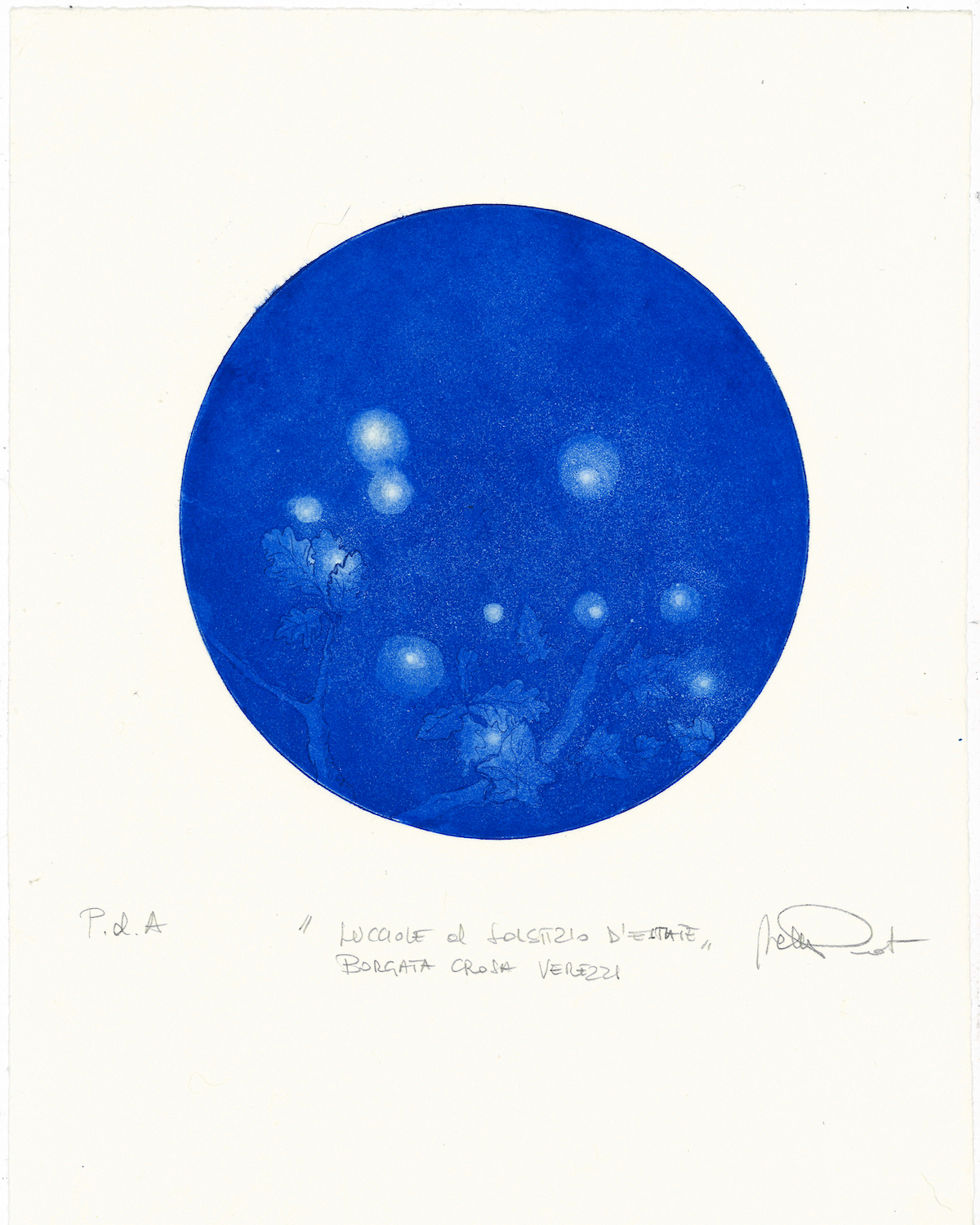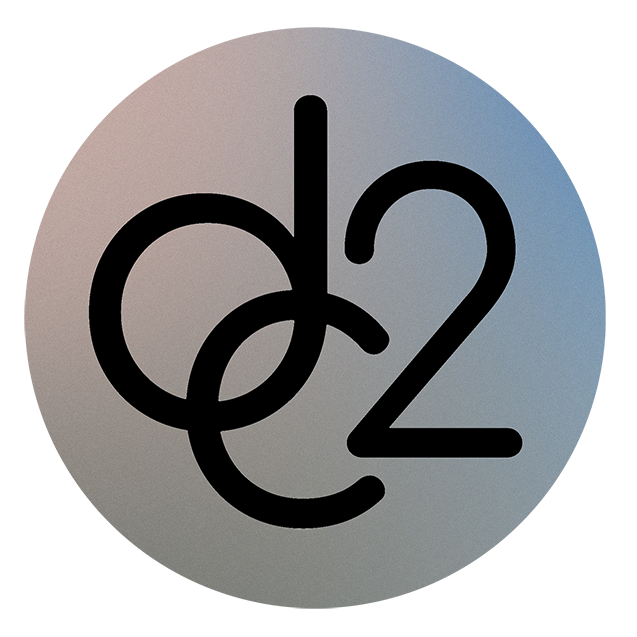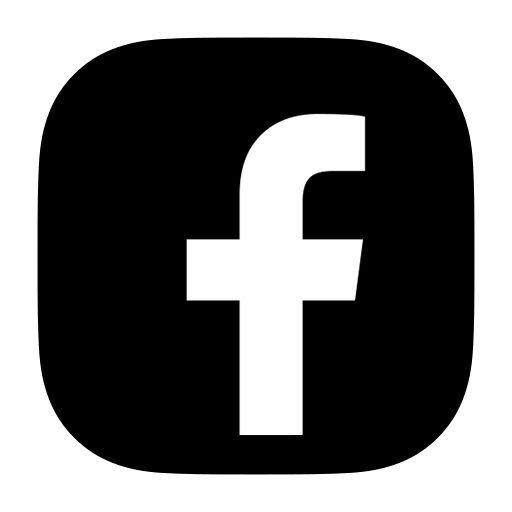Creativity as a cyclical force of nature and artists’ well-being

Michela: With gratitude, I would like to share a quote from my analyst, Ugo Fama, who comments on one of my paintings as follows: ‘We should be grateful to art and artists, these modern “alchemists” who, through their “creative affliction”, help us understand and hope.’ ‘Lucciole al Solstizio d’Estate’ by Michela Pessot (etching and aquatint, 2021)
Cami Ruohonen and Kristýna Ilek from Dare to Care Art Collective interviewed Michela Pessot about creativity and mental health. Michela Pessot is a doctor and psychiatrist who specialises in complementary medicines such as phytotherapy (treatment with plants and herbs) and homoeopathy. She treats various mental health conditions, including psychiatric disorders, chronic degenerative diseases, oncological conditions, and behavioural disorders in children and adolescents. Additionally, Michela founded the Hildegarda Medical Center in Turin, Italy where she practises her holistic approach to healing.
What is your relationship to mental health and art?
MP
My relationship with mental health and art is long and complex. My aunt Anna became mentally ill at a young age. She was diagnosed with schizophrenia, which destructures and disintegrates one’s ego. She attended the Academy of Fine Arts in Turin and was a great painter. The illness unfortunately interrupted the course of her life. I remember her either through her stays in the asylum or through her beautiful paintings hanging on the walls in my childhood home. I created a beautiful and serene relationship with her through my childhood and adolescence. When I was in high school, Anna passed away but she left me with a connection to art and mental health which accompanies me to this day. During middle school I became passionate about art and dreamt of enrolling in an art school. Unfortunately, due to my family’s choice influenced by aunt Anna’s story, it was not meant to be. As an adult, doctor and psychiatrist, I began painting with watercolour, sculpting and etching. Being creative allows me to refocus, find myself, believe in the future and dream after long and tiring hours of working as a psychiatrist. Then I brought artistic practice as an activity for psychiatric patients. We focus mostly on sculpting with clay, which to me is instinctive and spontaneous and it allows patients to project their feelings and emotions onto their work.
Could you explain to us, how does creativity work from your experience and practice?
MP
It is well known that intuition and creativity are linked to the right hemisphere of the brain. However, during my studies of medicine, neurology and psychiatry, I found no significant research on how creativity develops and organises itself from an anatomical and physiological point of view. Neuroscience, in recent decades, demonstrated the plasticity of the brain. Even in adulthood and old age, we can create and remodel brain synapses to respond to the external environment. Simply put, the more positive stimuli we have, for instance art, music or contact with nature, the more synapses and connections we can create. Intuition and creativity are the result of a very plastic mind. Creativity can also be understood as a form of energy. It develops when we are subjected to creative stimuli from early childhood. Artists have highly developed creativity-related brain functions which can be increased through meditative techniques. From my experience as a psychiatrist and an artist, creative energy is characterised by cyclicity. Creating means expansion; it is the growth of a project or of a work, which is inevitably followed by the mourning that characterises every realisation. In order to continue creating, one must be aware that it is necessary to go through a symbolic death and mourning each time. If the creator goes against this process, it might cause mental discomfort. In my opinion, artists often have a cyclothymic temperament which is almost necessary to be able to create. Cyclothymic temperament is characterised by alternating periods of emotional ups and downs. We can think of the life of a tree and other processes of death and rebirth in nature as a comparison.
Who is your typical patient? Do you work with artists?
MP
I do not have a typical patient. Because of my expertise not only in psychiatry but also homoeopathy, phytotherapy, and nutrition, my patients have various requests. Some patients contact me with mild to severe mental disorders. I also treat children with behavioural disorders. Many people come to me for prevention which consists of a correct diet and personalised homoeopathic treatment in order to avoid oncological, autoimmune or chronic degenerative diseases. In relation to my training at the Santa Croce Homoeopathic Oncology Clinic in Orselina, Locarno, directed by Dr Dario Spinedi I help patients with oncological and autoimmune diseases. Regarding artists, I mostly work with musicians. Most recently, I created workshops which focus on psychophysical balance and increasing creativity.
Maintaining a healthy relationship with creativity can be hard when artists face problems, such as financial precarity and toxic competition. Can you give some advice to artists who would like a healthy and satisfying career in the arts?
MP
Economic difficulties and competition certainly endanger artists’ creativity. I would suggest to artists, try to keep your childlike creativity and treat artmaking as a play. In artmaking, you should feel free, not judged and be able to detach yourself from the result. Such states of mind must be trained through meditative techniques and, although this may sound strange, by discipline. Artmaking is in fact a form of meditation which requires skill as well as discipline so that it is not detrimental for the artists. By discipline I mean a discipline in lifestyle, such as healthy eating and physical activity. In I segreti degli sciamani. Il risveglio al mondo degli spiriti (2013), Sandra Ingerman writes: ‘Developing a state of consciousness through art requires practice and discipline as well as balance. It is necessary to limit the egoic soul. Once this balance is created, the door of the heart is opened and the created object can take on wonderful levels of expression, because the opening of this channel allows inspiration to flow within us from the universal soul.’ Last but not least, I recommend contact with nature. For me, nature is an immense source of regeneration and inspiration. Walking in the woods in quiet places is a great help in soothing oneself and increasing creativity.
Art greatly contributes to societal well-being. How can artists improve their own well-being through art making?
MP
I have a very personal answer to this question. During a particularly turbulent period of my life, I turned for inspiration to Goddess Kali, who represents strength, feminine energy and the primary creative principle underlying the cosmos, the energising force behind all divine manifestation. I learnt about her in Ajit Mookerjee’s book Kali. La dea della forza femminile from 1988. Kali destroys evil forms; it is a destruction followed by creation. She embodies the vital principles of the visible universe, with its many faces: generous, cruel, creative, destructive, loving or indifferent (Mookerjee, 1988). During a difficult time, I collected many images of Kali from which I created a clay sculpture which then accompanied me for many years until my situation transformed. Based on this experience, I advise artists to keep their own truth, to limit their ego and to attempt to accept the cyclical nature of creation with its own lights and shadows.
Could you suggest an art therapy method that artists could apply to their practice?
MP
Art therapy techniques for artists should be as free as possible. It is best to use techniques that are completely different from those used in one's daily artistic practice and to work with rituals and play. In my opinion, artists who are interested in doing art therapy for themselves should return to archaic concepts of art. Very useful art techniques in psychotherapy can be sculpture with clay, pottery, textile art, yarns, but also any technique which is used without preconceptions and judgements. Another way could be creating ritual objects onto which projects their anxieties, fears, feelings, dreams and desires. In a ritual, these can be transformed into objects which help with mental well-being. I currently work on workshops during which art and shamanic techniques intersect.
What is in your opinion, the relationship between psychiatry and the use of psychedelics?
MP
My experience as a psychiatrist clearly showed me how drugs and psychoactive substances can damage the brain and can lead to mental disorders. It is true that such substances open the door for perception but they are very dangerous shortcuts. Psychoactive substances contain alkaloids, which in small doses cause rapid pharmacological reactions in our bodies, especially in the central nervous system. The effect of such substances can also be achieved through practices without the use of psychedelics. Through my learning of shamanic practices, I found out that one can achieve altered states of consciousness through various techniques which lead to profound insights and increased creative abilities without the use of any substances. The sound of a drum, used in shamanic practices, is a powerful tool which induces a state in which theta waves predominate and brain impulses range from 4 to 7 Hz. This is a deep and reflective dream-like state of the brain (Ingerman, 2013). I would like to conclude by quoting one of my favourite artists, in my opinion very dreamy, Odillon Redon: ‘I read somewhere that the ability to put more meaning into a work than one had intended, and to overcome it with an unexpected result, is only given to people who are completely loyal and sincere, to those who have something more in their soul than their art. I believe this too; one needs to care about truth, perhaps the gift of pity or suffering.’ (Odillon Redon, A se stesso, 2022).


